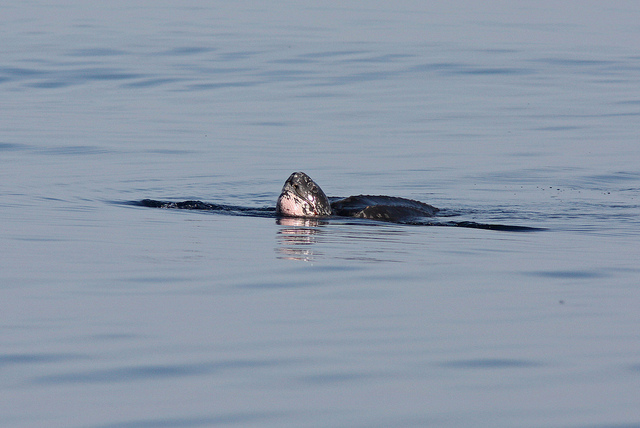The federal and Ontario environment commissioners recently released reports assessing progress — or lack thereof — in biodiversity and species at risk conservation.
Delays in completing legally required recovery activities are creating additional risks for some of Canada’s most vulnerable species.
Five years ago the federal environment commissioner had concluded that three organizations — Environment Canada, Fisheries and Oceans Canada, and Parks Canada — were making “unsatisfactory progress” in developing recovery strategies and complying with timelines in the federal Species at Risk Act. His follow-up report, released November 5, indicates that while Fisheries and Oceans Canada and Parks Canada have completed the majority of their recovery strategies, 84 per cent of those for which Environment Canada is responsible were overdue by more than three years as of March 2013.
Perhaps of greater concern is failure to complete the next recovery step — government action plans that identify specific locations and activities needed to rebuild species numbers.
The commissioner’s report cites the case of the Leatherback Sea Turtle, the world’s largest reptile and a species older than the dinosaurs. Leatherbacks nest in the Caribbean and migrate north to feed in waters off Canada’s Atlantic coast. Fishing and shipping activities threaten their survival. The report says: “Ten years after the species was listed as endangered, the specific actions needed to help the species’ recovery, along with its critical habitat, have not yet been determined, nor has a timeline been set for their implementation.”
One day after the release of the federal report, Ontario’s environment commissioner released his own report, Laying Siege to the Last Line of Defence. It documents serious weaknesses in implementing the provincial Endangered Species Act. Of the required recovery strategies for 155 endangered and threatened species and species populations in Ontario, half were not completed on time. As with the federal process, the next step is to develop a government response outlining recovery actions — which, predictably, involves further delays. The Ontario government recently announced an indefinite delay in response statements for lake sturgeon and polar bears, despite the absence of a legal basis for this inaction.
The commissioner’s report is scathingly critical of regulatory changes made by the Ministry of Natural Resources (MNR) in July 2013. Forestry operations, hydro-electric generating stations, aggregate pits and quarries, ditch and drainage activities, early exploration mining, wind facilities, and development and infrastructure projects were all exempted from the provincial act’s permitting requirement. This means that “prohibitions will no longer apply to a large number of activities that contributed to species becoming imperilled in the first place.” The report warns: “In the long-term, industries need to show their customers and the public that they are meeting tough, fair and up-to-date standards. Without high standards, there will inevitably be endless and expensive local battles.”
According to the report, the MNR was motivated to make regulatory changes because of “purported high costs of permitting.” It suggests that “MNR created an inefficient and ad hoc approach to permitting that was unnecessarily lengthy, convoluted, costly and extremely frustrating for proponents and other stakeholders.” With the new changes, “MNR cannot say ‘No’.” Proponents are only required to submit a “notice of activity” to the Ministry, and take “prescribed steps” to minimize adverse effects.
Considerable political pressure was exerted to make these changes to the provincial Act. The County of Renfrew passed a resolution claiming that “the Act is having serious negative effects on agriculture, forestry, aggregate extraction, development and tourism, and… is not achieving its intended purpose.” The resolution says that “regulatory decisions under the ESA are often made without a sound scientific basis or adequate data,” and “the Ministry of Natural Resources have tended to designate broad areas of land as critical habitat instead of narrowing the designation to those areas that are truly ‘essential’ as required by the ESA.” Renfrew County’s elected officials, while supporting the MNR’s changes that removed permitting requirements, stated that “we believe the Minister should go further and declare a moratorium on the implementation of the Act.” They sent their resolution to all Ontario municipalities, asking them to pass their own resolutions in support of it.
In a sense, it is unfortunate that endangered species legislation draws so much attention, when it is only intended to be a last resort for wildlife conservation. The federal environment commissioner released a companion report on November 5 describing a wildlife conservation success story: many of Canada’s waterfowl populations have increased. The report says this shows “what is possible through partnerships and concerted efforts, based on good conservation planning and agreed-upon conservation objectives.” It adds that 340 partners are involved in conservation projects involving migratory waterfowl, including federal and provincial departments; organizations such as Ducks Unlimited Canada, the Nature Conservancy of Canada, and Wildlife Habitat Canada; and various industries ranging from ranchers’ associations to oil and gas companies.
Partnerships, good planning, and agreed objectives seem to be a good way forward for wildlife conservation. If agencies such as the MNR are serious about achieving their mandate, they would do well to focus on what works and apply it to all species, rather than abandoning legislation intended to protect the most vulnerable.
Ole Hendrickson is a forest ecologist and current president of the Ottawa River Institute, a non-profit charitable organization based in the Ottawa Valley.
Photo: Dan Irizarry/flickr



